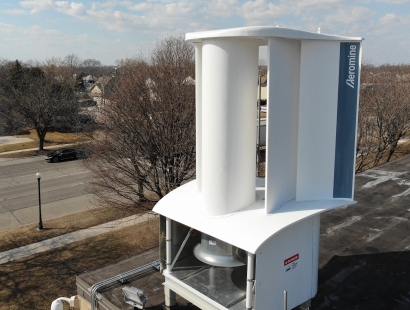
Companies piloting the new technology include BASF Corporation, which is testing the Aeromine system at its manufacturing plant in Wyandotte, Michigan.
Unlike noisy and visually intrusive wind turbines that rely on rotating rotor blades, are prone to maintenance issues, and can harm or kill birds, Aeromine is motionless. The technology leverages aerodynamics similar to airfoils on a race car to capture and amplify each building’s airflow.
Requiring just 10 percent of the roof space needed by solar panels, the stationary, silent and durable Aeromine unit generates around-the-clock energy in any weather. Aeromine systems consist of 20-40 units installed on the edge of a building facing the predominant wind direction.
Designed to work seamlessly with a building’s existing electrical system, the combination of Aeromine’s wind solution with rooftop solar can generate up to 100 percent of a building’s onsite energy needs, while minimizing the need for energy storage.
“This is a game-changer adding new value to the fast-growing rooftop power generation market, helping corporations meet their resilience and sustainability goals with an untapped distributed renewable energy source,” said Aeromine CEO David Asarnow, a veteran of the climate technology industry.
“Aeromine’s proprietary technology brings the performance of wind energy to the onsite generation market, mitigating legacy constraints posed by spinning wind turbines and less efficient solar panels.”
The Aeromine system can utilize a small footprint on a building’s roof, leaving ample space for existing solar and utility infrastructure. It provides commercial property owners, facing increased energy costs and rising demand for features such as electric vehicle charging stations, with an effective new tool in their drive toward energy independence.
Aeromine’s patented technology was validated through joint research with Sandia National Laboratories and Texas Tech University. The system is vibration free, silent, and easy to install.

